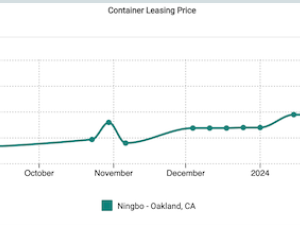Maritime Vessel Tracking Hardware Launches To Space Station Company to Receive Global AIS Maritime
posted by AJOT | Jul 18 2016 at 11:30 AM | Liner Shipping
“We are thrilled to see the culmination of our team’s efforts lift-off to a new home on the ISS,” stated Rob Carlson, JAI President. “The ISS offers low altitude, great stability, global reach and near-continuous downlinks, making it ideally suited to maximize reception and processing of AIS signals. We look forward to showcasing the power of GLASS to continually process global ship-traffic data and provide valuable information for commercial, safety and security, environmental and educational purposes.”
The downlinked data, which includes information regarding the location, type and navigational activities of commercial ships across the globe will be collected and shared with user-evaluators. These parties will use and analyze the data in their respective fields of interest. Representative applications include increasing the safety and efficiency of port and vessel operations, protecting the marine ecosystem, curtailing illegal fishing, protecting national security interests and augmenting academic research.
User-evaluators can choose to receive the data as AIS data packets for their own manipulation or through software tools, such as HarborlightsTM, a powerful software system used by the Port of Houston and other Texas ports for the tracking and scheduling of all ships visiting the ports.
“Our evaluators are located throughout the world and represent various businesses, agencies and research and educational institutions,” said Carlson. “Additional organizations interested in participating as data evaluators may contact us for information and opportunities.”
GLASS is a research and development project led by JAMSS America, Inc., a Houston-based aerospace engineering company. The project brings together a comprehensive team of maritime and space experts interested in improving maritime domain awareness. Collaborators include the University of Hawai’i, Greater Houston Port Bureau, Mare Liberum and Flexitech. GLASS is sponsored and partially funded by the Center for the Advancement of Science in Space (CASIS), a not-for-profit organization responsible for expanding use of the ISS National Laboratory.
The GLASS project serves as a precursor to a follow-on initiative, set to greatly expand the spectrum coverage to encompass VHF, UHF, S- and X-bands through use of dynamically programmable software defined radio receivers. “The facility is an evolutionary extension of the GLASS capabilities to include a much broader range of frequencies,” said Carlson.
This ensuing system, anticipated to launch to the space station in late-2017, is designed for simultaneous use by large numbers of customers, each with their unique requirements. “From long-distance animal migration research to monitoring of high-value assets or spectrum surveys, our goal is to provide reliable, continuous coverage for scientific, business, regulatory and educational applications,” added Carlson.





